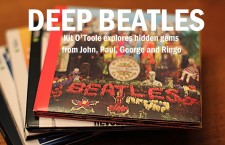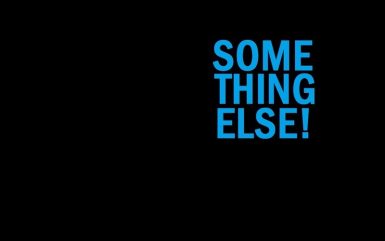One of Magical Mystery Tour’s most memorable sequences remains the ending, when the Beatles jog down a staircase in all white tuxedos, surrounded by an assortment of women in ballgowns, others in military garb, and more. Paul McCartney’s grin and exaggerated dance moves illustrate how much he enjoyed filming the scene, perhaps because the four were dancing to one of his own compositions: “Your Mother Should Know,” a track written specifically for a big production number.
In addition, the song pays tribute to his father’s music hall background as well as his family’s deep love for the genre. As McCartney told biographer Barry Miles in Many Years from Now, he envisioned a Busby Berkeley-style number while writing the song. He wrote it at his Cavendish Avenue home on a harmonium.
During this time, relatives including Aunty Jin (who was later name-checked in the Wings hit “Let ‘Em In”) were also staying with him. Their conversations inspired McCartney to compose the track; perhaps their presence also reminded him of music hall, a beloved tradition that McCartney had revisited previously in songs such as Sgt. Pepper’s “When I’m Sixty-Four,” and Yellow Submarine’s “All Together Now.”
McCartney revealed another source of inspiration: the fact that generation gaps often irritated him. “A mother not being understood by her child is particularly sad because the mother went through pain to have that child, and so there is this incredible bond of mother love, like an animal bond between them – but, because we mess things up so readily, they have one argument and hate each other for the rest of their lives,” McCartney said. “So I was advocating peace between the generations. … I was basically trying to say, your mother might know more than you think she does. Give her credit.” The title derives from the manuscript for A Taste of Honey, a 1958 “kitchen-sink” drama later filmed for the big screen in 1961.
A month before the Beatles laid down the initial version of “Your Mother Should Know,” Paul McCartney had participated in the recording of “Catcall,” an instrumental he had composed during the Quarrymen days. The Beatles performed it live at the Cavern Club but never officially recorded it, so McCartney gave the track to Chris Barber, a trombonist who led his own group, the Chris Barber Band.
During the July 20, 1967 recording session at Chappell Recording Studios, McCartney played organ and cheered along with others in the background. “Catcall” contained the old-time vibe present in “Your Mother Should Know,” continuing Paul McCartney’s penchant for revisiting the past.
The Beatles recorded “Your Mother Should Know” at Chappell Recording Studios August 22-23; the second night marked the final time Brian Epstein would attend a Beatles recording session. During the first night, they recorded eight takes; the next day the group returned to complete overdubs. According to Mark Lewisohn’s Complete Beatles Recording Sessions, McCartney reconsidered the tapes the next month, this time back at Abbey Road. Apparently unhappy with the August sessions, he led the Beatles through 11 more takes, this time utilizing a marching beat (this version can be heard on Anthology 3). Ringo Starr played snare drums and cymbals. McCartney sang guide vocals; harmonium, jangle piano, and bongos were also added.
By September 29, however, McCartney abandoned this version and returned to the August 22-23 recordings. Drawing from take nine, Lennon overdubbed an organ part while McCartney played bass. Mono and stereo mixes were subsequently completed.
Close harmonies start “Your Mother Should Know” and reappear throughout, particularly repeating the title phrase. Ringo Starr’s drums resound, particularly in the 2009 remaster, and McCartney’s voice alternates between the left and right speakers. In a clear, understated voice, McCartney invites listeners to “Get up and dance to a song / That was a hit before your mother was born.” She may have been born “a long long time ago,” McCartney states, but clearly understands great music.
Pianos dominate the recording, particularly in the chorus. Interestingly McCartney just sings “da da da” over the bridge, deciding not to add more lyrics. This does lend an unfinished sense of the track, as if he had sung that in the demo in place of words. The section also follows important music hall protocol: the singalong. By restricting the words to syllables, McCartney ensures that international audiences can participate.
In Revolution in the Head, Ian MacDonald points out a fascinating aspect of the song: its changing tempo. During the second verse, the speed gradually slows down, “a reliable sign of jadedness, and very unusual for Starr (who, to do him justice, may have had to dub his drums on against McCartney’s prerecorded piano track).”
The final verse further continues the music hall tradition by directly inviting the audience to participate in the song. “Lift up your hearts and sing me a song,” McCartney entreats the listener. Now, bystanders have become part of the performance; as McCartney told Miles, he bridges the generation gap through music.
“Your Mother Should Know” may not break new musical ground, but it further exemplifies how the Beatles drew from seemingly unlikely sources in their compositions. Placed at the end of the psychedelic film Magical Mystery Tour, “Your Mother Should Know” provides a safe, familiar place for viewers. Disturbed by the hallucinogenic qualities of “Flying” or “Blue Jay Way”? Stay for the return of traditional sounds performed by a thoroughly modern band.
- The Rescued Early Paul McCartney Song That Completed ‘Beatles For Sale’ - December 4, 2024
- A Rare Beatles Cover Proves John Lennon Was Wrong About His Voice - November 26, 2024
- How John Lennon Came Roaring Back on the Beatles’ White Album - November 22, 2023


